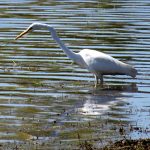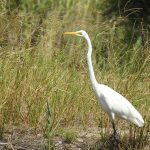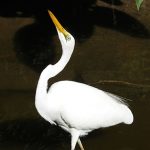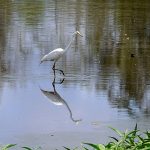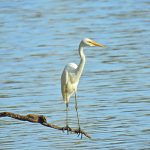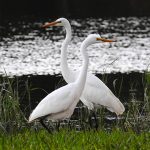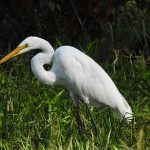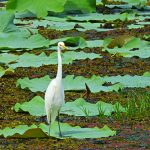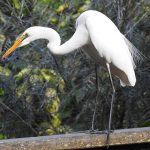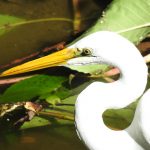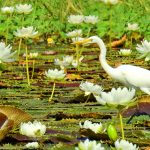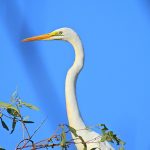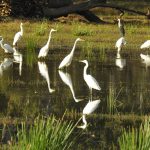GREAT EGRET
SPECIES NAME
The Great Egret is a striking, tall wader bird with all-white plumage. During the breeding season, it develops long, elegant plumes on its back, which were once highly sought after for the fashion industry and nearly led to their extinction in the late 19th century. It has a long, slender neck, a sharp, pointed bill, and distinctive black legs and feet.
Great Egrets have a widespread distribution and can be found on every continent except Antarctica. In Australia, they are commonly found along the coastal regions and inland wetlands, making them a favorite subject for birdwatchers.
They inhabit a variety of wetland habitats, including marshes, swamps, rivers, lakes, and coastal estuaries. Great Egrets are often seen wading in shallow water, patiently stalking their prey. They are known for their stealthy hunting techniques. They stand motionless in the water or slowly wade, using their long necks and sharp bills to strike at fish, amphibians, insects, and other small aquatic creatures. Their hunting style is a captivating sight for wildlife enthusiasts.
During the breeding season, Great Egrets engage in elaborate courtship displays. They typically nest in colonies, often in trees near water bodies. The nests are made of sticks and are usually situated in high branches to protect them from predators.
In Australia, Great Egrets are primarily resident birds, but some populations are known to be partially migratory, moving short distances in response to seasonal changes in habitat and food availability.
Great Egrets are not currently considered globally threatened, but they have faced significant population declines in the past due to hunting for their plumes. Conservation efforts, including the protection of nesting colonies and wetland habitats, have helped their populations recover.
Birdwatchers in Australia can enjoy observing Great Egrets in a variety of wetland habitats along the coast and inland. Look for them wading in shallow waters or perched in trees near their nesting sites. They are often seen in the company of other waders and waterfowl, making wetlands a prime spot for birdwatching.
Observing Great Egrets can be a rewarding experience for wildlife enthusiasts due to their elegant appearance and fascinating hunting behaviors. Remember to maintain a respectful distance and use binoculars or a telephoto lens to avoid disturbing the birds while watching them in their natural habitat.

